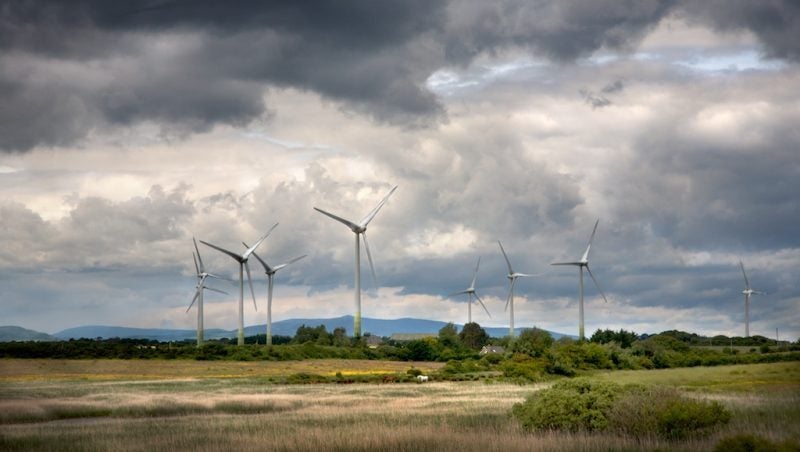
Ireland’s wind energy production hit a new high in 2019, providing 32.5% of the country’s total demand. The amount of electricity generated has increased from 8.6 million MWh in 2018 to 9.5 million MWh in 2019.
According to a report published by the Irish Wind Energy Association (IWEA), in 2019 24 wind farms with a combined capacity of 463MW were installed, leading to a total of 4,100MW. Last year was the second-best year on record, said the IWEA.
The representative body for the Irish wind industry also highlighted that in February and December 2019 wind energy provided more electricity than natural gas.
IWEA CEO Dr David Connolly said: “Every year we are cutting more CO2 emissions, reducing Ireland’s dependency on imported fossil fuels and driving down the wholesale price of electricity.
“The two dozen new wind farms we connected last year will enable us to build on our success in 2019 and we have already set new records for the amount of wind energy on the system in the first two months of 2020.”
Even though the data showed a positive trend, Connolly said that the industry is not close to fulfilling its potential, but with the right policies, most of the country’s electricity could derive from wind.

US Tariffs are shifting - will you react or anticipate?
Don’t let policy changes catch you off guard. Stay proactive with real-time data and expert analysis.
By GlobalDataConnolly said: “Our target in the Climate Action Plan is to double our installed onshore wind capacity and we are confident we have the pipeline to enable us to do so. We also have enormous offshore wind energy resources with more than 12 GW of offshore projects at some stage of development.
“That is why it is so important that the government moves ahead to ensure the first auction in the Renewable Electricity Support Scheme, announced last week, concludes, on time, in June.”
The new scheme will enhance support for renewable electricity projects in Ireland, focusing on cost-effectiveness.
“The delays so far in getting the scheme set up mean we’re already looking at a serious slowdown in construction when we need to be building at a much faster rate.
“Any more time lost would slow down the development of new projects and pose a threat to the delivery of the Climate Action Plan.”
Ireland’s Climate Action Plan was set up in 2019 and it sets out 183 actions sectors have to make to meet the country’s 2030 goals and zero net emissions by 2050.
Lost energy is another concern experts like Connolly have. According to the IWEA, in 2019 a million MWh of electricity corresponding to the 8% was lost because transmission operators instruct wind farms to produce less or shut down.
He added: “These record levels of dispatch down mean an enormous amount of lost clean energy which must be replaced by fossil fuels.
“We need a stronger transmission system to ensure that we are not wasting electricity and, if we are to achieve our 2030 targets, and beyond them to 2040 and 2050, then we are going to need a plan to build a stronger electricity grid.”
The causes of such decisions lie in the fact that in certain parts of Ireland transmission systems are not strong enough to transport all the wind energy. Another reason is that in order to ensure market stability the amount of wind energy produced cannot be more than 65% of demand.



